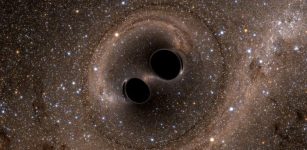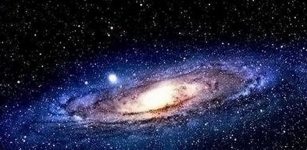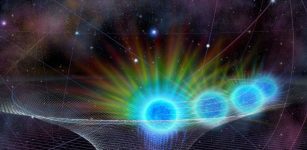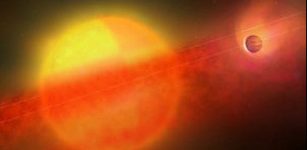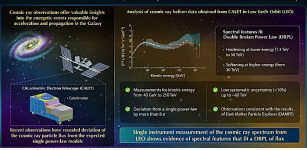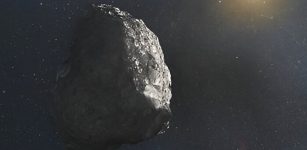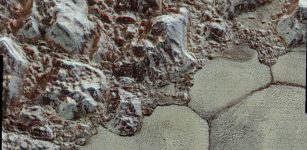Smallest Known Dark Matter Clumps – Detected By Hubble Space Telescope
Eddie Gonzales Jr. – MessageToEagle.com – Using NASA’s Hubble Space Telescope and a new observing technique, astronomers found dark matter forms much smaller clumps than previously known.
The result confirms one of the fundamental predictions of the widely accepted “cold dark matter” theory.
 Each of these Hubble Space Telescope snapshots reveals four distorted images of a background quasar and its host galaxy surrounding the central core of a foreground massive galaxy. (NASA, ESA, A. Nierenberg/JPL and T. Treu/UCLA)
Each of these Hubble Space Telescope snapshots reveals four distorted images of a background quasar and its host galaxy surrounding the central core of a foreground massive galaxy. (NASA, ESA, A. Nierenberg/JPL and T. Treu/UCLA)
All galaxies, according to this theory, form and are embedded within clouds of dark matter. Dark matter itself consists of slow-moving, or “cold,” particles that come together to form structures ranging from hundreds of thousands of times the mass of the Milky Way galaxy to clumps no more massive than the heft of a commercial airplane
Dark matter is an invisible form of matter that makes up the bulk of the universe’s mass and creates the scaffolding upon which galaxies are built. The dark matter concentrations detected by Hubble are 1/10,000th to 1/100,000th times the mass of the Milky Way’s dark matter halo. While dark matter concentrations have been detected around large- and medium-sized galaxies, much smaller clumps of dark matter have not been found until now.
According to the new observations, dark matter is “colder” than it would have to be in the warm dark matter alternative theory.
“Dark matter is colder than we knew at smaller scales,” Anna Nierenberg of NASA’s Jet Propulsion Laboratory in Pasadena, California, leader of the Hubble survey, said in a press release.
“Astronomers have carried out other observational tests of dark matter theories before, but ours provides the strongest evidence yet for the presence of small clumps of cold dark matter. By combining the latest theoretical predictions, statistical tools, and new Hubble observations, we now have a much more robust result than was previously possible.”
The team targeted eight powerful and distant cosmic “streetlights,” called quasars (regions around active black holes that emit enormous amounts of light). The astronomers measured how the light emitted by oxygen and neon gas orbiting each of the quasars’ black holes is warped by the gravity of a massive foreground galaxy, which is acting as a magnifying lens.
The eight quasars and galaxies were aligned so precisely that the warping effect, called gravitational lensing, produced four distorted images of each quasar. The effect is like looking at a funhouse mirror. Such quadruple images of quasars are rare because of the nearly exact alignment needed between the foreground galaxy and background quasar.
The quasars are located roughly 10 billion light-years from Earth; the foreground galaxies, about 2 billion light-years.
The number of small structures detected in the study offers more clues about dark matter’s nature, but as the researchers say, the type of particle that makes up dark matter remains a mystery.
Written by Eddie Gonzales Jr. – MessageToEagle.com Staff


